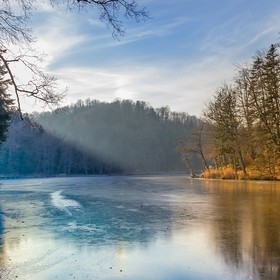

objektivka
Follow
Views
78
Likes
Awards
2020 Choice Award
Categories
Same photographer See allBehind The Lens
Discover more photos See all
Behind The Lens
Location
This photo was taken last summer on the idyllic, remote island of Susak in the Adriatic Sea in Croatia. The south side of the island facing the open sea and away from light pollution and is an ideal place to photograph the Milky Way.Time
When I plan to photograph astronomical events, I use several apps that make it easy for me to choose a location and time. This photo is a composite of seven photos and the first one was taken around 8:30 pm just minutes before dusk turns into night, and the last one was taken around 9 pm, on August 30, 2019.Lighting
For astrophotography, if timing allows, I always use natural light, while there is still enough light to make the foreground colors visible, and take some shots. Then I wait until the conditions for the main event are met and take shots with responding exposure.Equipment
The equipment used for this photo is Canon 6D, Samyang 14mm F2.8, intervalometer, and tripod.Inspiration
As a kid, I loved to lie down and watch the night sky with all the planets, stars, and galaxies. Today, when we live in large urban areas with heavy light pollution, we have forgotten what a beautiful starry sky above us looks like. That is why in my photos I try to show that the stars in all their beauty are still above us even though we have destroyed the view with excessive use of artificial light. The inspiration for this photo was that the Milky Way was reflected in a puddle on the rocks so the experience was double.Editing
When photographing the night sky, I always take a certain amount of photos of the same composition so that the noise can be reduced in post-processing. This particular photo was developed from seven identical shoots (but different exposures for foreground and background) that, after classic processing in PS and LR, were combined in Sequator to minimize noise.In my camera bag
I always carry wide-angle 14mm and 17-40mm, 50mm as well as a 70-300mm telephoto lens in my bag. Besides, I also use an intervalometer and ND filters.Feedback
There's something surreal about photographing the night sky, and if you decide to try astrophotography be prepared to hours of off-site planning and calculating as well as location scouting before taking that epic shot. And if you are lucky enough that the weather conditions on the planned day are great, in the end, the result could be breathtaking.










































